Abstract
Sorption of insecticides by muds and other materials used in the construction of native huts prolongs their duration of action or persistence. The use of gamma-BHC as a residual insecticide has been limited by the fact that its sorption by most materials is of a low order, so that it is comparatively short acting. If gamma-BHC is melted with a resin, the solid solution can be converted into a water-dispersible powder which is much more persistent on sorptive and semi-sorptive surfaces. Laboratory experiments had shown that the best results were obtained with a proprietary resin known as Cereclor. Field trials conducted by the authors have now demonstrated that this formulation retained its efficacy for at least six months, even on surfaces of low sorptive power, such as thatch and sisal. Gamma-BHC alone was much less persistent, except on mud walls, but even here bioassay showed the formulation with Cereclor to be more active. The authors consider that gamma-BHC/Cereclor approximates to the ideal insecticide for the spraying of native huts in malaria control.
Full text
PDF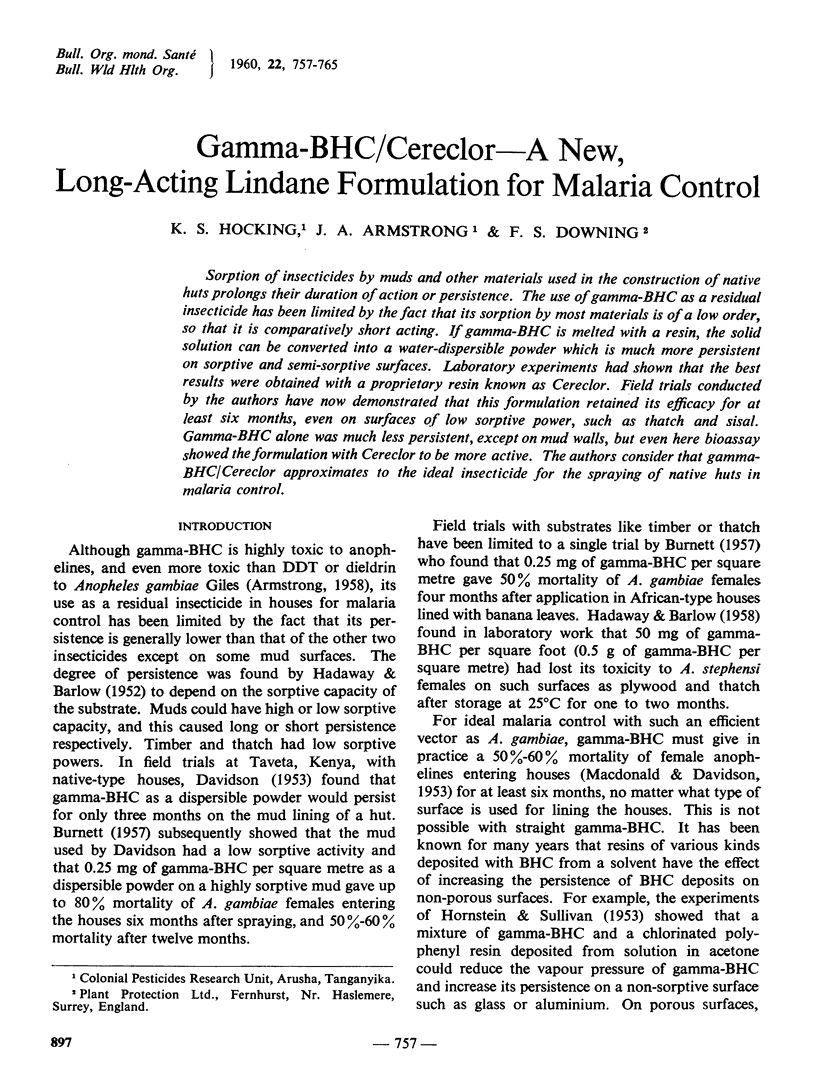

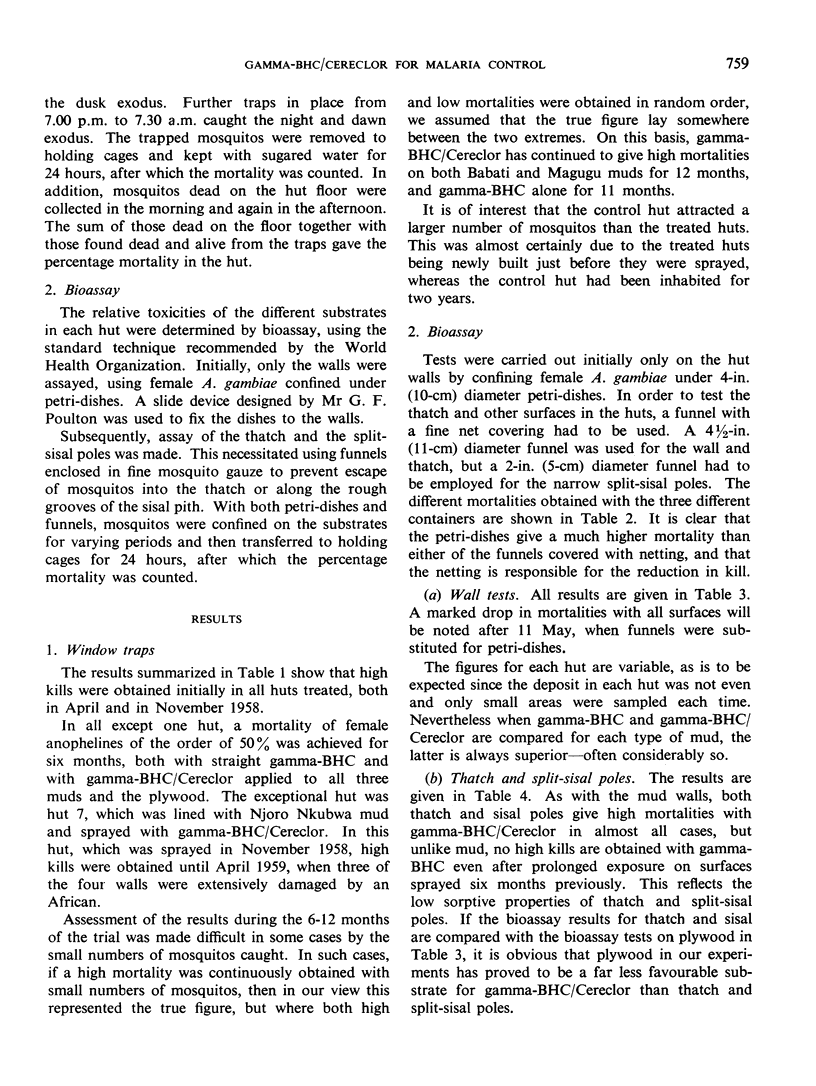
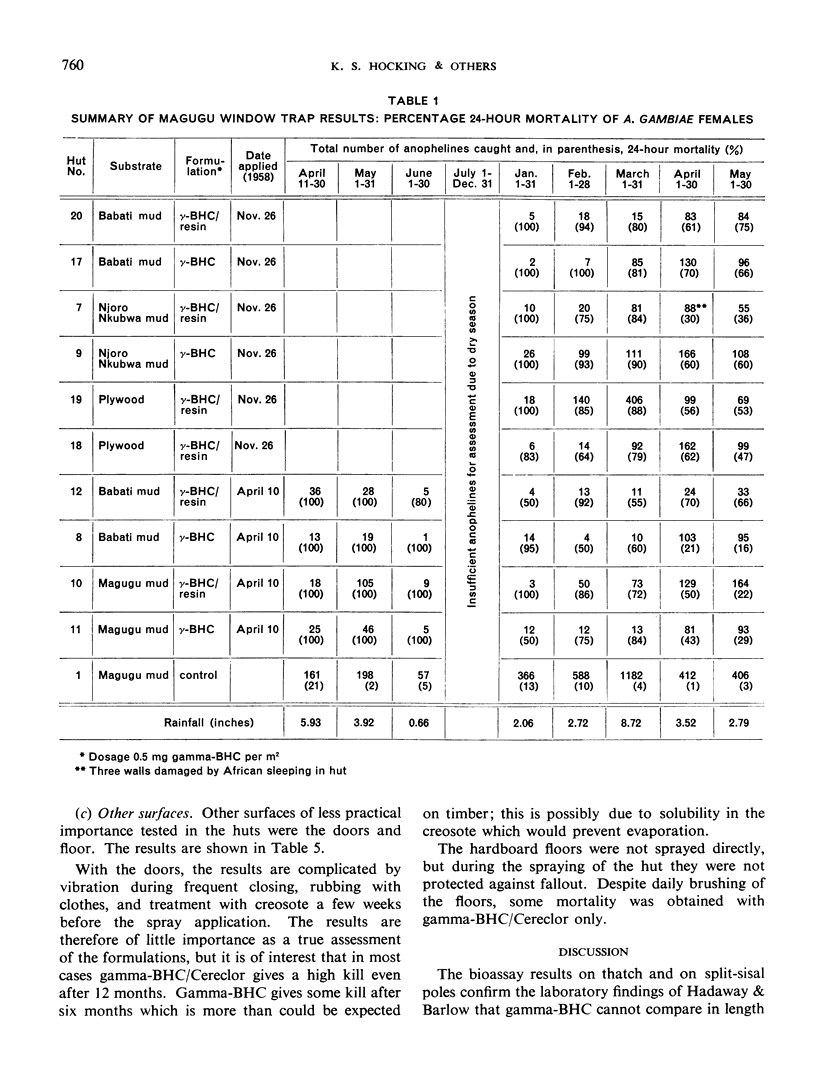

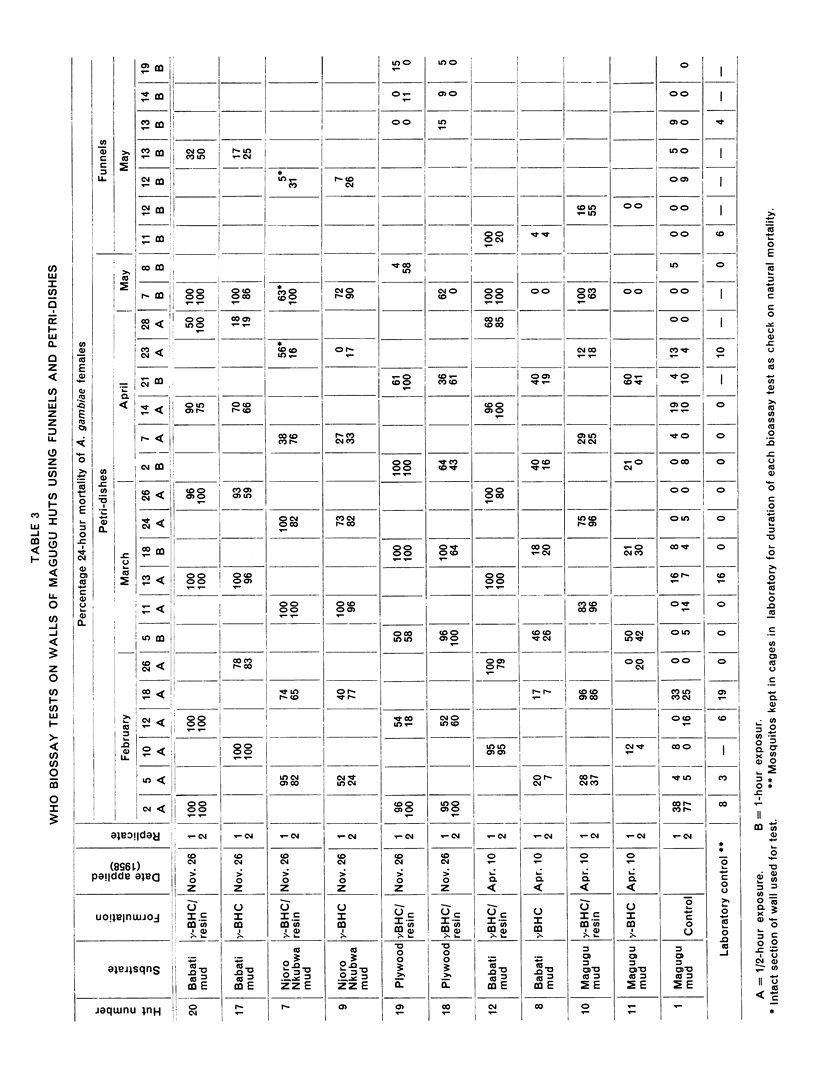
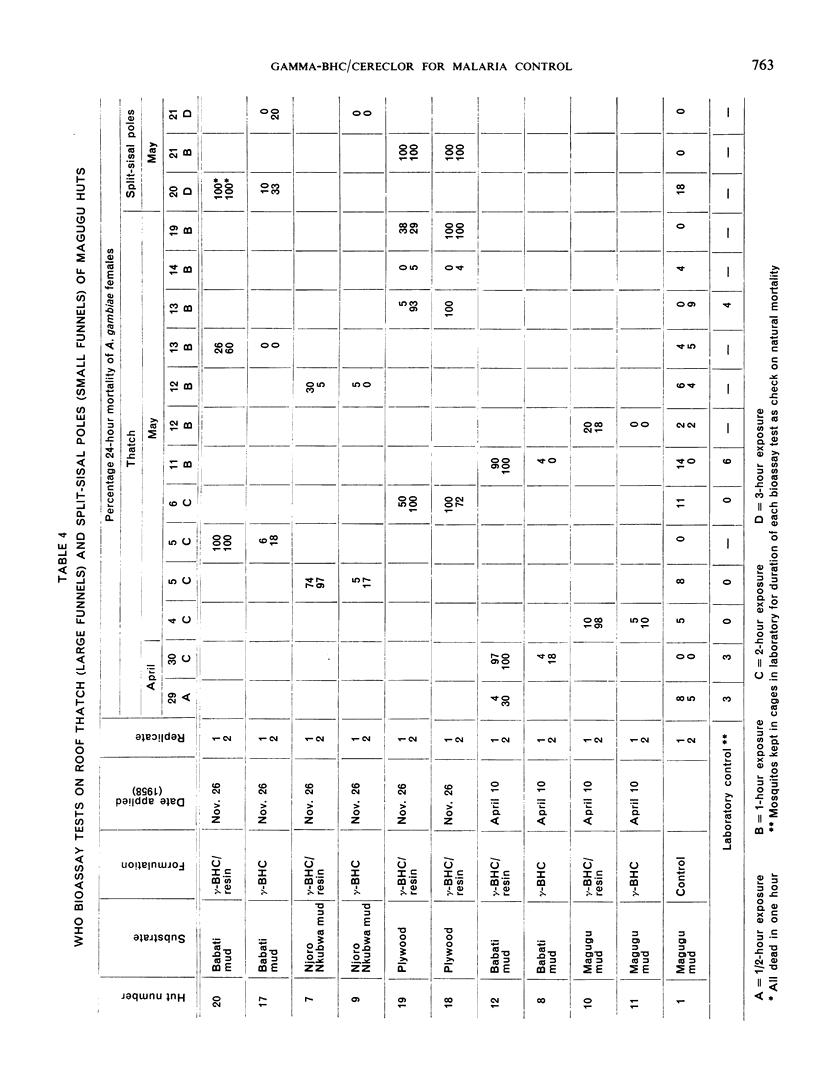
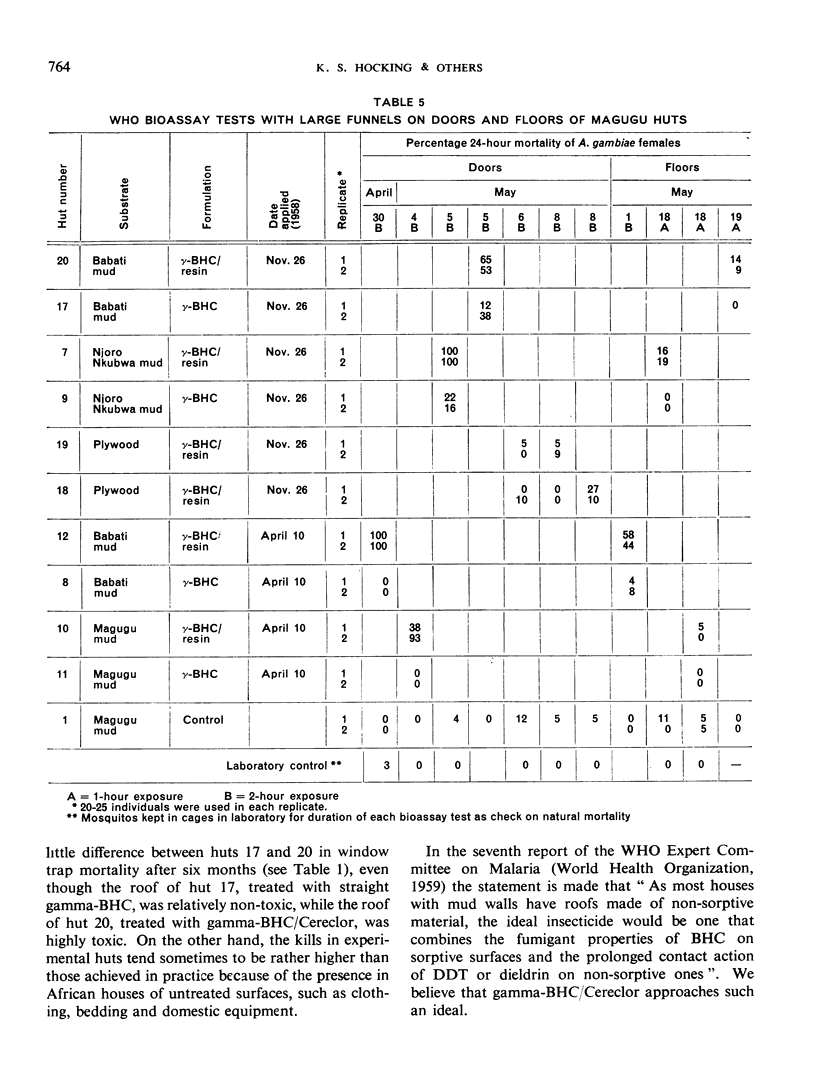
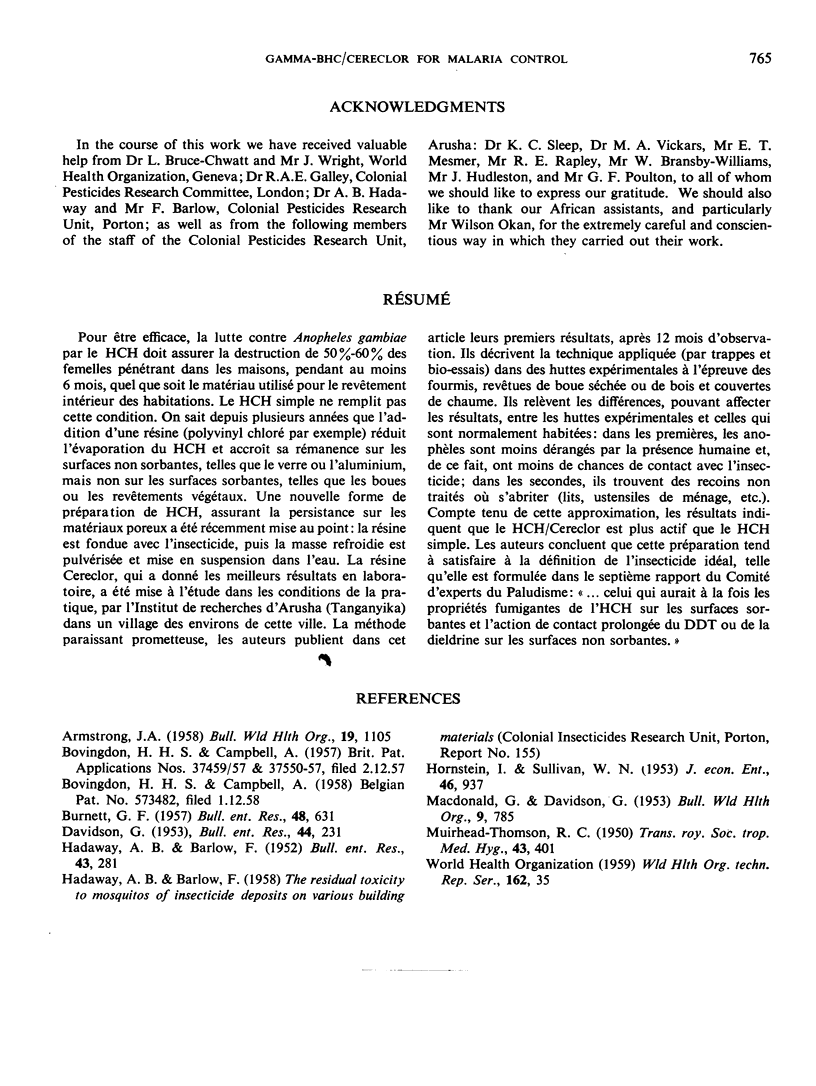
Selected References
These references are in PubMed. This may not be the complete list of references from this article.
- MACDONALD G., DAVIDSON G. Dose and cycle of insecticide applications in the control of malaria. Bull World Health Organ. 1953;9(6):785–812. [PMC free article] [PubMed] [Google Scholar]
- MUIRHEAD-THOMSON R. C. DDT and gammexane as residual insecticides against Anopheles gambiae in African houses. Trans R Soc Trop Med Hyg. 1950 Jan;43(4):401–412. doi: 10.1016/0035-9203(50)90036-8. [DOI] [PubMed] [Google Scholar]


